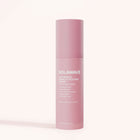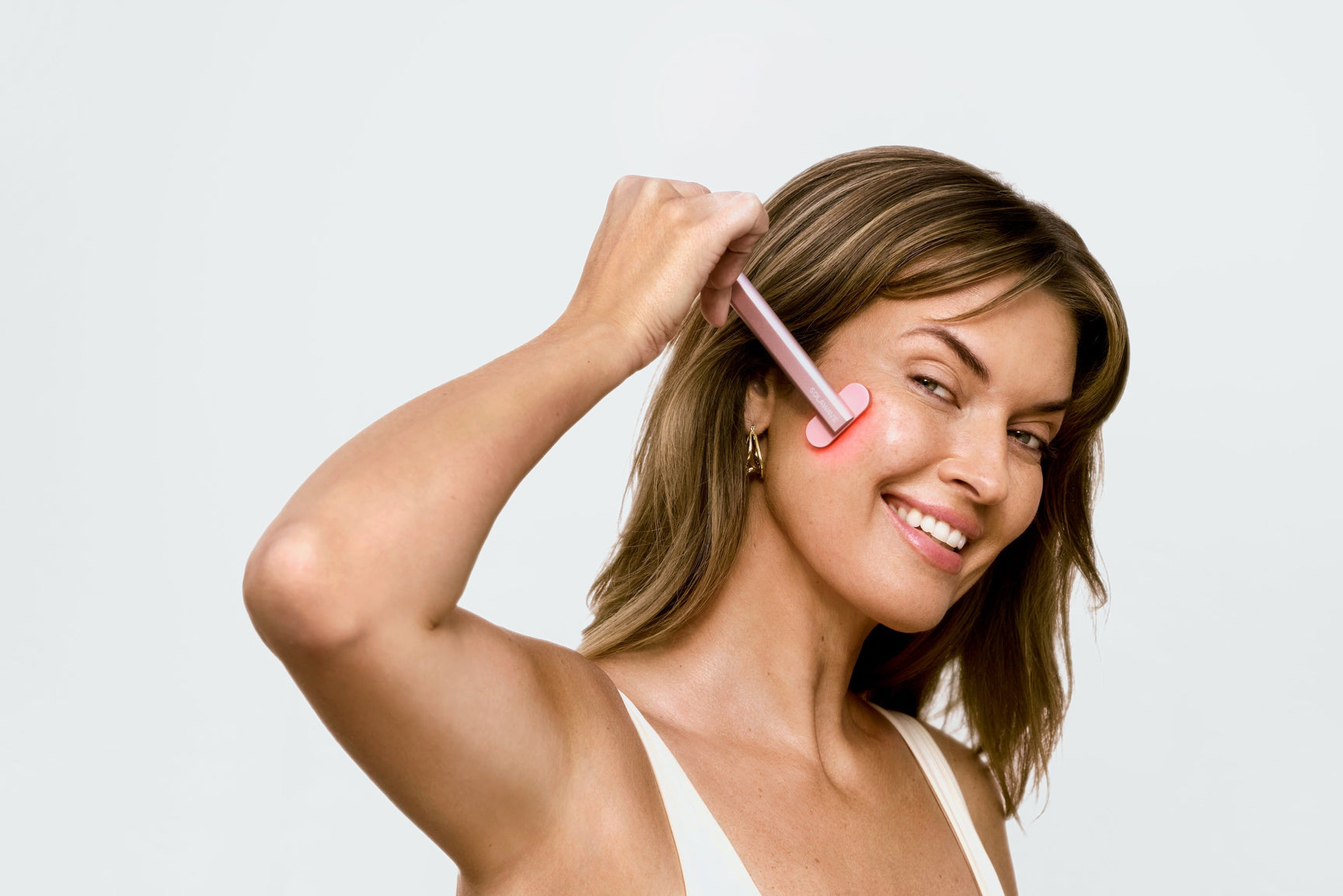

What Are Crow's Feet And How To Treat Them
While crow’s feet are a natural (and very common) part of the skin aging process, many people still try to minimize the visibility of these fine lines for a more youthful, glowing facial complexion. With advancements in both dermatological and at-home treatment options, it’s easier than ever to address these and other wrinkles, which can offer a boost in confidence that’s welcome at any age. Let’s talk about crow’s feet and what your options are for smoothing them.
What Are Crow's Feet?
Crow's feet are the fine lines and wrinkles that form at the outer corners of the eyes, extending towards the temples. These lines are often among the first visible signs of skin aging, resulting from facial expressions like smiling, squinting, and laughing causing the same area of skin to crease repeatedly over the course of many years. Additionally, factors like sun exposure, reduced collagen production, and the natural skin aging process can contribute to their development.
What Causes Crow's Feet?
Repetitive Facial Expressions
Frequent facial movements such as smiling, squinting, and laughing cause the skin around the eyes to crease repeatedly, leading to the development of crow’s feet over time. Because we all make these facial expressions throughout our lifetimes, crow’s feet are one of the most common signs of skin aging, as well as being a sign of skin aging that many people notice first.
Sun Exposure
Exposure to ultraviolet (UV) rays from the sun can accelerate the breakdown of collagen and elastin fibers in the skin. This degradation can weaken the skin's structure with prolonged, repeated, unprotected exposure to UV rays, making the skin more prone to developing wrinkles (including crow’s feet) over time.
Reduced Collagen Production
As we age, our body's production of collagen naturally decreases. Collagen is essential for maintaining skin firmness as it serves as structural support in the middle layer of our skin. Reduced collagen levels result in thinner, less resilient skin, which is more susceptible to wrinkling.
Natural Skin Aging Process
The natural skin aging process itself can contribute to the formation of crow's feet. Over time, the skin typically loses its ability to retain moisture and regenerate cells as efficiently. This is a primary reason that older skin seems drier and thinner, which in turn makes wrinkles and fine lines more pronounced.
Environmental Factors
Environmental factors such as pollution and harsh weather conditions can also damage the skin's surface and accelerate the skin aging process. These external stressors can contribute to the formation of crow's feet and other fine lines on the face by weakening the skin's protective barrier, which is crucial for the very thin, sensitive skin that makes up most of the face.
Lifestyle Choices
Certain lifestyle choices, including smoking and poor diet, can also negatively impact skin health. Smoking reduces blood flow to the skin, depriving it of essential nutrients and oxygen, while a poor diet can lead to deficiencies in vitamins and minerals necessary for skin repair and maintenance.
At What Age Do You Get Crow's Feet?
Crow's feet typically begin to appear in the late 20s to early 30s, although the exact age can vary based on individual factors such as genetics, lifestyle, and environmental exposure.
People who have significant sun exposure, with or without adequate protection, may notice these fine lines earlier than those who don’t have as much time out in the sun. The same concept applies for individuals who smoke, whose skin will typically start showing signs of skin aging many years before their smoke-free counterparts.
Conversely, individuals who maintain a rigorous skincare routine, protect their skin from UV rays, and lead a healthy lifestyle may delay the arrival of crow's feet.
How To Get Rid of Crow's Feet
Reducing the appearance of crow's feet involves a combination of skincare treatments and protective measures, including: topical treatments with ingredients like retinoids, peptides, and antioxidants, red light therapy for rejuvenating the skin, chemical peels and laser resurfacing, Botox® injections, microneedling, proper hydration and using broad-spectrum sunscreen, and utilizing the right skincare routine.
Topical Treatments
Topical treatments, such as topical creams and serums containing retinoids, peptides, and hyaluronic acid, can help support firmness and suppleness in the skin, while also improving skin texture and overall texture. These ingredients are often found in anti-aging formulas because of their ability to restore hydration and plumpness to the skin.
Red Light Therapy
Red light therapy uses low-level wavelengths of light to penetrate the skin, promoting collagen production and rejuvenating the skin. This non-invasive treatment can reduce the appearance of fine lines and improve skin tone and texture.
Our Wrinkle Retreat Light Therapy Face Mask can help minimize the appearance of crow’s feet as well as other fine lines and wrinkles caused by skin aging and UV damage. With just a 10-minute treatment time, you can take advantage of red and near-infrared light therapy to achieve a lifted, firm complexion without the invasiveness of other options on this list!
If you’re looking to boost the skincare benefits you get from your red light therapy session, we also offer a 4-in-1 Skincare Wand. Our innovative skincare wand combines four proven non-invasive at-home skin treatments: red light therapy, galvanic current, facial massage, and therapeutic warmth. Together, these help target crow’s feet as well as other wrinkles and fine lines, dark circles, puffiness, dark spots, and skin texture.
Chemical Peels
Chemical peels involve a dermatologist or esthetician applying a chemical solution to the skin that exfoliates the skin’s outer layers and thus promotes cell turnover. This process helps to diminish the visibility of wrinkles as skin is encouraged to renew itself, though it may not be as effective for aged skin that may not turnover as efficiently.
Botox® Injections
Botox® injections temporarily relax the muscles, and when performed around the eyes, can smooth out the appearance of crow's feet. This treatment is generally effective for reducing dynamic wrinkles caused by facial expressions, it should be performed by a dermatologist, nurse practitioner, or other certified/licensed medical professional. The effects of Botox® typically last for three to six months, after which the treatment can be repeated to maintain the desired results.
Laser Resurfacing
Laser resurfacing treatments use focused light beams to remove damaged skin layers and stimulate collagen production. While this procedure can effectively improve the appearance of wrinkles, scars, and other blemishes, it often requires significant downtime for healing, and carries the risk of side effects such as redness, swelling, and even scarring. Additionally, the results can vary widely depending on individual skin types and conditions.
Microneedling
Microneedling involves creating controlled “micro-injuries” in the skin using fine needles. This is said to stimulate the skin's natural healing processes and promote collagen formation, helping to reduce the appearance of fine lines and wrinkles. Microneedling is typically performed by licensed and trained professionals, such as dermatologists, plastic surgeons, and licensed estheticians.
Prevention Through Hydration and Sun Protection
Maintaining proper hydration and using broad-spectrum sunscreen daily are essential for protecting the skin from UV damage and preventing further wrinkle formation. Adequate hydration is essential in keeping the skin plump and healthy, while sunscreen shields it from harmful UV rays. Even if you already have crow’s feet, incorporating these preventative practices into your daily life can help prevent wrinkles from becoming more prominent, and paired with a nourishing skincare routine, can also help to minimize how noticeable wrinkles and fine lines may appear.
What Is the Best Skincare for Crow’s Feet?
A consistent, nourishing skincare routine can help to minimize the appearance of crow's feet and other fine lines and wrinkles in the face.
- Incorporate products with restoring ingredients like retinoids, peptides, and hyaluronic acid to nourish skin and restore firmness. Our Plumping Peptide Serum with Solabiome™ is specifically formulated with avocado peptides, hyaluronic acid, and a proprietary complex of skin barrier-strengthening ingredients to hydrate and firm for visibly plump, nurtured skin!
- Regular exfoliation helps remove dead skin cells and reveal new, radiant skin that also makes for a smoother texture and brighter complexion.
- Hydrating serums, cleansers, and moisturizers can help keep the skin looking plump and supple, which can in turn reduce the visibility of fine lines. We offer a Hydrating Gel Cleanser with the same Solabiome™ complex in our peptide serum, as well as a Nourishing Moisturizer packed with hyaluronic acid, collagen peptides, and a mushroom humectant for dewy, healthy-looking skin.
- Anti-aging eye creams specifically formulated for the delicate skin around the eyes can provide targeted treatment to both minimize the appearance of crow's feet and even help to prevent them.
How To Prevent Crow's Feet
Preventing crow's feet altogether involves adopting a proactive skincare routine paired with making lifestyle choices that protect and nourish the skin.
Unsurprisingly, many ingredients in the skincare routine above for nourishing the skin to reduce the appearance of fine lines and wrinkles are the same ingredients you need in a regular skincare routine that you start as soon as your skin reaches maturity. Incorporating antioxidant-rich serums and moisturizers into the skincare regimen even at a younger age can help combat free radicals and support skin health.
With that, daily use of broad-spectrum sunscreen is essential to shield the skin from harmful UV rays, which accelerate aging and wrinkle formation, while staying hydrated by drinking plenty of water and using hydrating skincare products keeps the skin plump and resilient.
Additionally, wearing sunglasses can reduce squinting, thereby minimizing the repetitive facial movements that contribute to crow's feet. As always with skin, maintaining a healthy diet rich in vitamins and minerals, getting adequate sleep, and avoiding smoking are all positive moves to make, and can help prevent the early onset of fine lines and wrinkles around the eyes.
Summary
Crow's feet are the fine lines that radiate from the corners of the eyes outward toward the temples, they are a natural part of the skin aging process. From topical treatments and red light therapy, to chemical peels and microneedling, there are multiple methods available to reduce the appearance of these wrinkles. Preventative measures, such as using sunscreen, staying hydrated, and maintaining a healthy lifestyle, are equally important in preserving youthful skin.
Looking to start addressing your own crow’s feet with our innovative, at-home red light therapy? Explore our anti-aging red light therapy treatments here.
Sources:
- The impact of ultraviolet radiation on skin photoaging — review of in vitro studies - PMC
- Skin: Layers, Structure and Function
- Age Related Changes to the Integumentary System | Biology of Aging
- Dermatologist-recommended skin care for your 20s
Disclaimer: Botox® is a registered trademark of Allergan.
















